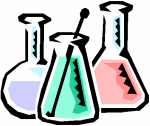Chemistry
|
2 june 2020 15:21:08 |
| Anthelmintic drug discovery: target identification, screening methods and the role of open science (Beilstein Journal of Organic Chemistry) |
|
Tweet Abstract
Helminths, including cestodes, nematodes and trematodes, are a huge global health burden, infecting hundreds of millions of people. In many cases, existing drugs such as benzimidazoles, diethylcarbamazine, ivermectin and praziquantel are insufficiently efficacious, contraindicated in some populations, or at risk of the development of resistance, thereby impeding progress towards World Health Organization goals to control or eliminate these neglected tropical diseases. However, there has been limited recent progress in developing new drugs for these diseases due to lack of commercial attractiveness, leading to the introduction of novel, more efficient models for drug innovation that attempt to reduce the cost of research and development. Open science aims to achieve this by encouraging collaboration and the sharing of data and resources between organisations. In this review we discuss how open science has been applied to anthelmintic drug discovery. Open resources, including genomic information from many parasites, are enabling the identification of targets for new antiparasitic agents. Phenotypic screening remains important, and there has been much progress in open-source systems for compound screening with parasites, including motility assays but also high content assays with more detailed investigation of helminth physiology. Distributed open science compound screening programs, such as the Medicines for Malaria Venture Pathogen Box, have been successful at facilitating screening in diverse assays against many different parasite pathogens and models. Of the compounds identified so far in these screens, tolfenpyrad, a repurposed insecticide, shows significant promise and there has been much progress in creating more potent and selective derivatives. This work exemplifies how open science approaches can catalyse drug discovery against neglected diseases.
Beilstein J. Org. Chem. 2020, 16, 1203–1224. doi:10.3762/bjoc.16.105 |
| 310 viewsCategory: Chemistry |
 [ASAP] Metal-Free C–C Coupling of an Allenyl Sulfone with Picolyl Amides to Access Vinyl Sulfones via Pyridine-Initiated In Situ Generation of Sulfinate Anion (Journal of Organic Chemistry) [ASAP] Metal-Free C–C Coupling of an Allenyl Sulfone with Picolyl Amides to Access Vinyl Sulfones via Pyridine-Initiated In Situ Generation of Sulfinate Anion (Journal of Organic Chemistry)[ASAP] Separation of Levulinic Acid by Reaction with Tri-n-butylphosphate Diluted in Nontoxic Solvents (Journal of Chemical & Engineering Data) 
|
| blog comments powered by Disqus |
MyJournals.org
The latest issues of all your favorite science journals on one page
The latest issues of all your favorite science journals on one page



